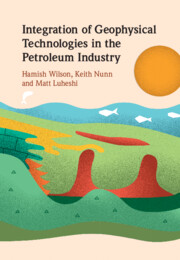Book contents
- Integration of Geophysical Technologies in the Petroleum Industry
- Integration of Geophysical Technologies in the Petroleum Industry
- Copyright page
- Contents
- Contributors
- 1 Introduction
- 2 The Hydrocarbon Exploration Process
- 3 Crustal Seismic Studies
- 4 Gravity and Magnetics
- 5 Full Tensor Gradiometry
- 6 Marine Electromagnetic Methods
- 7 Ocean Bottom Marine Seismic Methods
- 8 Microseismic Technology
- 9 A Road Map for Subsurface De-risking
- Glossary
- Index
- References
7 - Ocean Bottom Marine Seismic Methods
Published online by Cambridge University Press: 25 November 2021
- Integration of Geophysical Technologies in the Petroleum Industry
- Integration of Geophysical Technologies in the Petroleum Industry
- Copyright page
- Contents
- Contributors
- 1 Introduction
- 2 The Hydrocarbon Exploration Process
- 3 Crustal Seismic Studies
- 4 Gravity and Magnetics
- 5 Full Tensor Gradiometry
- 6 Marine Electromagnetic Methods
- 7 Ocean Bottom Marine Seismic Methods
- 8 Microseismic Technology
- 9 A Road Map for Subsurface De-risking
- Glossary
- Index
- References
Summary
This chapterreviews the development of “conventional” towed streamer marine seismic work from 2D through 3D, its shortcomings, and its continuing development into so-called “broadband” seismic. It describes and explains the recent trend towards ocean-bottom recording, currently mostly executed using nodes (OBN), whose market share has expanded from around 10% in 2013 to an estimated 25% in 2020. It covers the increasing requirement for higher quality seismic data to enable imaging of the very problematic subsurface structures such as subsalt plays, which require more extensive shooting geometries and extra low-frequency bandwidths. “Blended” sources are bringing costs down, and practical research includes the use of autonomous underwater vehicles (AUVs), possibly even deployed as intelligent “swarms.” Cost comparisons of the current techniques are included.
Keywords
- Type
- Chapter
- Information
- Publisher: Cambridge University PressPrint publication year: 2021
References
- 1
- Cited by



